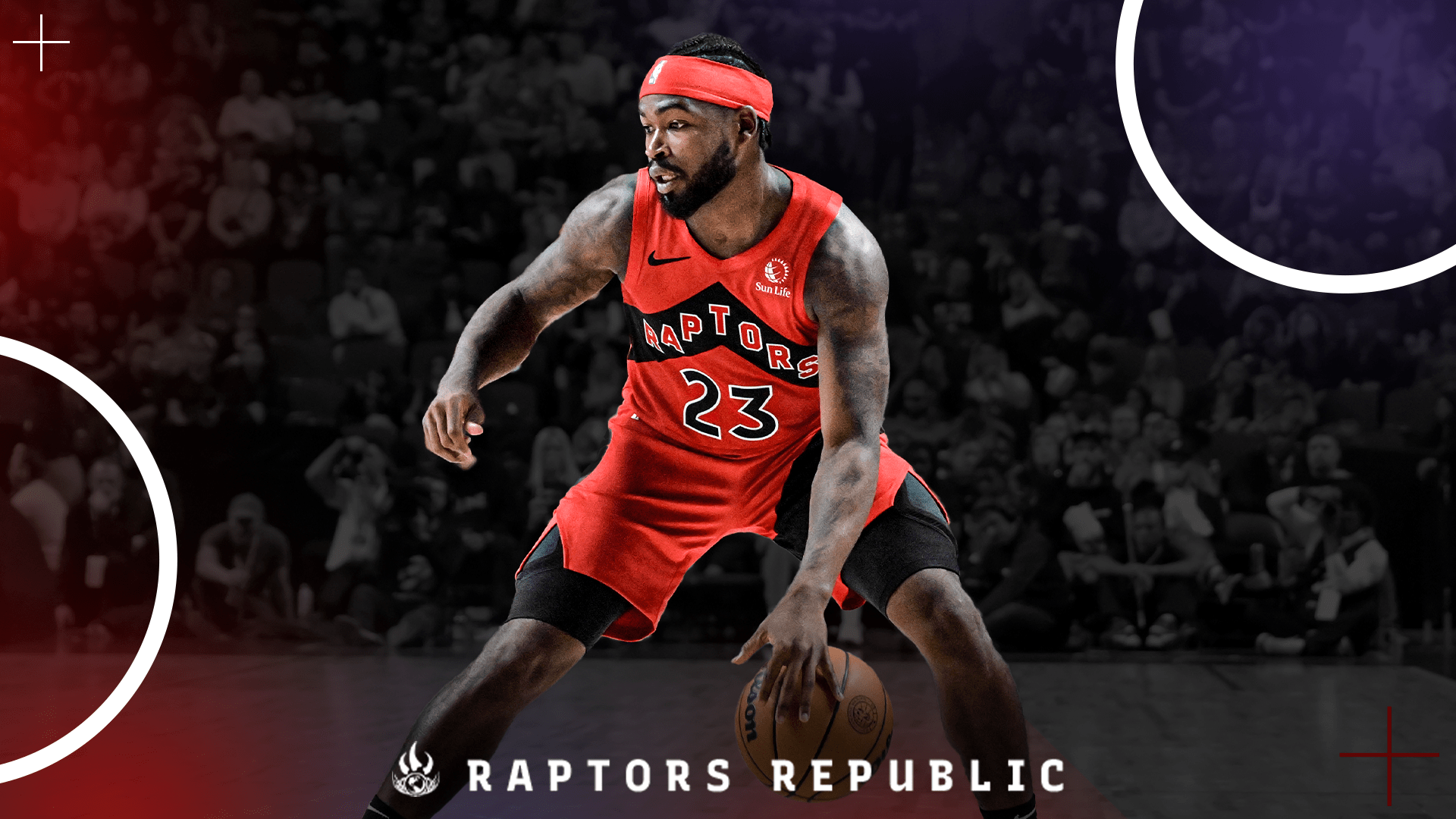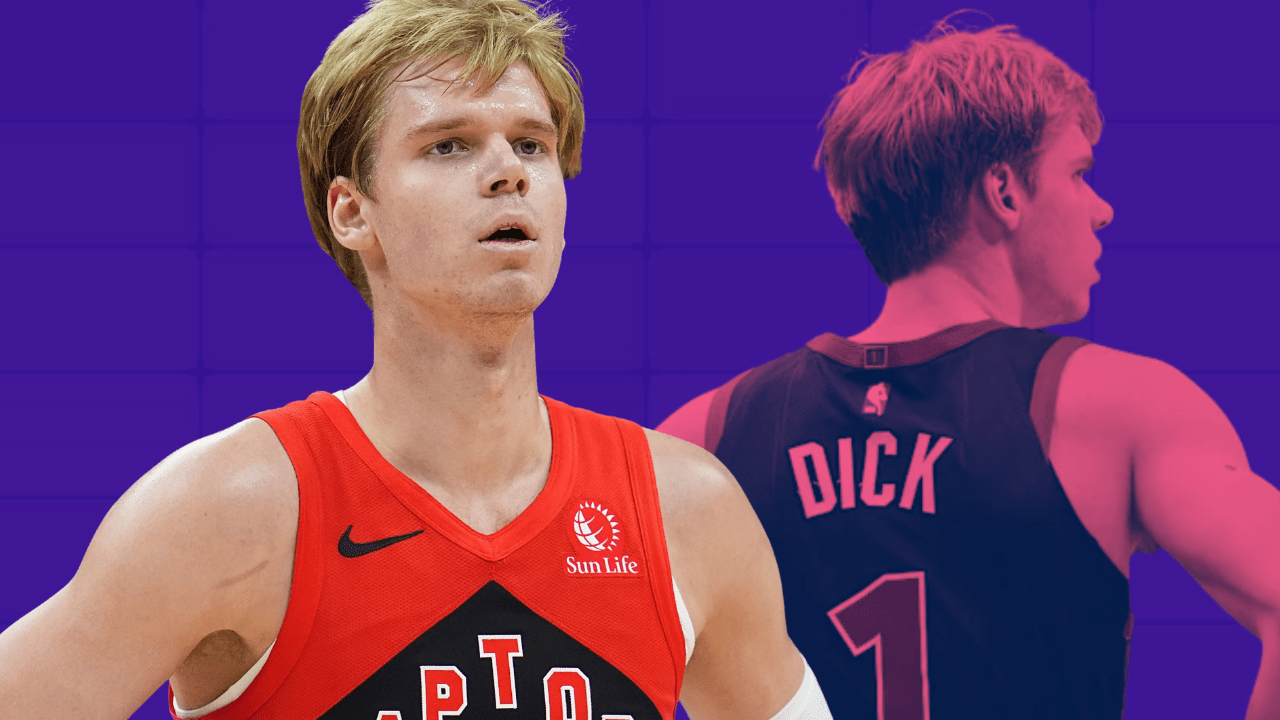With Summer League done and dusted, we’ve been able to get a little taste of what Toronto Raptors’ ninth overall pick Collin Murray-Boyles can bring to the table.
Starting with the defence, where down in Las Vegas he was imposing on that end, as his lateral movement ability, physicality, and strong hands stood out. The 20-year-old averaged 1.8 steals, 1.0 blocks, and led the team in rebounding by grabbing 5.5 boards across his four games played.
This matched up with what he did at South Carolina, as he was viewed as one of the best defenders in the 2025 draft class with his near 7-foot-1 wingspan and 239-pound frame. For context, the Gamecocks had a +18.3 NET rating and a 105.7 defensive rating with Murray-Boyles on, and a 117.8 defensive rating with him off (97th percentile).
Murray-Boyles will immediately add a defensive punch for the Raptors while being scheme-versatile on that end, despite only measuring in at 6-foot-6 and a half without shoes on at the combine.
Offensively, however, it was pretty inconsistent this summer. But when he was on, he was on.
Murray-Boyles broke out in the game to get the Raptors to the semifinals against the Golden State Warriors, scoring a game-high 20 points to go along with nine rebounds, four steals, and two assists. He was Toronto’s only source of offence in that one, and while the shot is still a work in progress (9-for-39 [23.1 per cent] across two years in college), he was able to impact the game.
In Las Vegas as a whole, Murray-Boyles averaged 10.5 points and 2.0 assists per game while shooting 57.1 per cent from the field and 22.2 per cent from distance (2-for-9).
South Carolina head coach Lamont Paris also spoke very highly about Murray-Boyles during one of the Raptors broadcasts at Summer League.
“His feel for the game is at such a high level it’s hard to describe,” said Paris.
“Everyone makes a big deal about the shooting, he is such a hard worker that it would shock me if that’s not something he would be able to do eventually.”
Over his two years at South Carolina, however, he showed a variety of ways to contribute and put the ball in the basket. Murray-Boyles shot 66.9 per cent (168-for-251) at the rim, 71.2 per cent (37-of-52) as a cutter, and 50.9 per cent (27-of-53) as a pick-and-roll, roll man.
He also demonstrated a high feel as a playmaker and connective passer, recording 41 assists against 26 turnovers over his final 14 games. He’s also comfortable operating as a dribble-handoff hub, which is something that very much fits in Toronto.
Overall, at South Carolina, the 20-year-old averaged 16.8 points, 8.3 rebounds, 2.4 assists, 1.5 steals, and 1.3 blocks while being one of only five players in the Southeastern Conference (SEC) to average 15 or more points and five or more rebounds.
Now that we’ve established his game, we can start to project how Toronto’s newest top-10 pick will potentially fit into the lineup. Before we project how the 20-year-old will factor into the rotation, however, we must establish the rotation Murray-Boyles will be joining, which in itself is murky.
While the Raptors have a young core that was highlighted in Las Vegas at Summer League, Toronto features five established players in the league who will more than likely start for the Raptors in former New York Knicks, Immanuel Quickley and RJ Barrett, trade deadline acquisition Brandon Ingram, face of the franchise Scottie Barnes, and the recently extended Jakob Poeltl.
It’s nearly impossible to try and figure out how this group will do, though the inclusion of the former All-Star Ingram is expected to help Toronto’s half-court offence issues.
Murray-Boyles should be expected to start a handful of games and play alongside this core as injuries are a natural part of the sport (a little too natural for the Raptors over the past two seasons) and Toronto’s last couple of rookies have started more than a few games in their rookie years. 2023 13th overall pick Gradey Dick started in 17 games as a rookie, while 2024 19th overall pick Ja’Kobe Walter started 18 games last season.
Murray-Boyles inserting himself as a small ball five next to Barnes is one of the options, and maybe the most likely. Last season, Toronto started Jonathan Mogbo as a small-ball five, creating a switchable and fast front court next to Barnes, who could make up for some rim protection roaming off the weak side.
Expect Murray-Boyles to fit right into that.
How the minutes are distributed between Mogbo and Murray-Boyles will be interesting, as though very different players, both fill a similar role.
Playing at the four is also a high possibility, and Murray-Boyles’ natural position. What the rookie will look like next to Poeltl or another big man is also up for debate. White his cutting ability and overall feel for the game can help succeed at the four, to excel he will more than likely need to play next to a spacing big.
The pairing of Murray-Boyles and the newly acquired big Sandro Mamukelashvili could be an interesting duo off the bench. Mamukelashvili can space the floor, while the rookie could make up for some of his limitations defensively.
What kind of player the top-10 pick grows into is the big question. Toronto needed another defender of Murray-Boyles’ calibre, and he does enough offensively to get by, especially from the five spot. What level his 3-point shot gets to will ultimately play a major factor in his ceiling and his versatility offensively as a player.
How Toronto decides to utilize him next to players like Barnes, Mogbo, and even potentially Poeltl will be one of the main things to follow early in Murray-Boyles’ career, as everybody tries to figure out what one of the most unique players in the 2025 draft can ultimately become.



